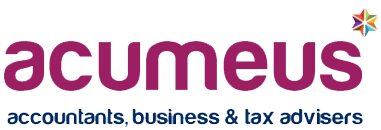As the tax year approaches its end on 5 April 2025, it’s the perfect time to review your tax position and take proactive steps to minimise your tax liability. Proper tax planning can help individuals and businesses save money while ensuring compliance with tax regulations. Here are some effective pre-year-end tax planning strategies to consider. It also highlights some of the upcoming changes to the tax system that could affect you and your business.
Utilise Available Allowances
Ensure you’re making the most of available tax allowances and reliefs before the year ends. These include:
• Personal Allowance: The amount of income you can earn tax-free remains at £12,570. Under the current guidance, the personal allowance will remain frozen until April 2028.
If your income exceeds £100,000 you will begin to lose your tax-free personal allowance. The personal allowance is reduced by £1 for every £2 of income above £100,000. There is therefore no personal allowance at all where income exceeds £125,140. Personal pension contributions and Gift Aid donations can be made, where possible, to mitigate the impact of the tapering of the personal allowance.
• Dividend Allowance: If you receive dividend income, you can take advantage of the £500 tax-free dividend allowance.
• Capital Gains Tax (CGT) Allowance: The annual exempt amount for capital gains tax is £3,000. If you have assets to sell, consider using this allowance before it resets.
• Marriage Allowance: If your spouse or civil partner earns less than the personal allowance threshold, they may be able to transfer up to £1,260 of their unused personal allowance to you, reducing your tax liability.
• ISA Allowance: You can invest up to £20,000 annually in Individual Savings Accounts (ISAs), with any returns being tax-free.
Consider Pension Contributions
Contributing to a pension is a tax-efficient way to save for the future while reducing your tax bill. The annual pension contribution limit is currently £60,000, depending on your earnings. Pension contributions attract tax relief, meaning the government boosts your savings. Higher and additional rate taxpayers benefit the most from this strategy. However, keep in mind the upcoming changes to Inheritance Tax (IHT) on pension funds when planning your contributions.
Consider Making Charitable Donations
Charitable donations made through Gift Aid allow charities to reclaim basic rate tax, and higher-rate taxpayers can claim additional relief through their tax returns. If you are considering making donations, doing so before the year-end can help lower your taxable income.
Plan for Inheritance Tax (IHT)
If your estate is above the IHT threshold (£325,000), consider making tax-efficient gifts. You can give away up to £3,000 per year without it being counted towards your taxable estate. Any unused portion can be carried forward to the next tax year, but only for one tax year.
Starting from 6 April 2027, unused pension funds and death benefits will be included in your estate for IHT purposes. This means that any remaining pension funds could be subject to a 40% tax if your estate exceeds the £325,000 threshold. To mitigate this, consider strategies such as gifting assets during your lifetime or setting up life assurance policies within a trust to cover potential IHT liabilities. If you live for seven years after making a gift, no tax is due, except for some gifts involving trusts. However, if you pass away between three and seven years of making a gift, IHT is applicable at a tapered rate depending on how recently the gift was made.
Plan for Changes in National Insurance Contributions (NICs)
From 6 April 2025, employer NICs will increase from 13.8% to 15%, and the threshold at which employers start paying NICs will decrease from £9,100 to £5,000. If you’re a business owner, consider the impact of these changes on your payroll and explore options like adjusting salary structures including using salary sacrifice or utilising the increased Employment Allowance, which will rise to £10,500.
Extracting Profits Efficiently (For Business Owners)
If you are a director-shareholder in a limited company, consider how you extract profits to minimise tax liability:
• Salary vs. Dividends: A combination of salary and dividends can help reduce National Insurance Contributions (NICs) and tax liabilities.
• Director’s Pension Contributions: Your company can contribute to your pension, which is a tax-deductible expense.
• Company Benefits: Offering tax-efficient benefits such as electric company cars or cycle-to-work schemes can be beneficial.
Directors’ Loan Account
For director-shareholders in family companies (i.e. close companies), a director’s loan account (DLA) can be utilised as an effective tax planning tool.
A DLA records transactions between a director and their company, including money borrowed or repaid.
It allows a director-shareholder to access company funds without incurring immediate tax liabilities. However, it is crucial that the director’s loan is repaid within nine months of the company’s year-end to avoid the Section 455 tax charge at 33.75%.
The options to clear the director’s loan account and avoid the s455 charge includes repayment in cash and paying dividends or a bonus.
If your loan goes over £10,000 at any point in the year, and it is interest-free, it will be treated as a taxable benefit in kind. This means that your company will have to pay Class 1A National Insurance and you will have to pay Income Tax.
Navigate Changes in Capital Gains Tax (CGT)
The Autumn Budget has increased the main rates of CGT. For disposals made on or after 30 October 2024, the lower rate has risen from 10% to 18%, and the higher rate from 20% to 24%. These rates of CGT are applicable to assets other than residential property.
For those benefiting from Business Asset Disposal Relief (formerly Entrepreneurs’ Relief), the rate remains at 10% for now but will increase to 14% from 6 April 2025, and to 18% from 6 April 2026.
If you’re planning to exit your business, investigate if your business qualifies for reliefs like Business Asset Disposal Relief to reduce CGT liabilities, and consider the timing of disposal to benefit from current CGT rates.
Plan for Changes to Furnished Holiday Lets (FHLs)
The government has announced the abolition of the Furnished Holiday Lettings (FHL) tax regime from 6 April 2025. Under the current regime, FHLs benefit from favourable tax treatment, including capital allowances, CGT reliefs, and the ability to deduct mortgage interest in full. From April 2025, FHLs will be taxed in the same way as other rental properties, which may reduce tax efficiency for property owners.
If you own a furnished holiday let, you may want to review your property portfolio and consider selling before the 6 April 2025 to benefit from Business Asset Disposal Relief. Also consider how you can use any losses as from 6 April 2025, brought forward FHL losses will be converted into normal UK or foreign property losses. This means you can set them against profits from other property income, not just FHL profits.
Review Your Business Structure
If you are a sole trader or partnership, you may benefit from incorporating your business. Limited companies pay Corporation Tax at 25% (or a reduced rate of 19% for small businesses), which may be lower than personal tax rates on self-employed income.
Conclusion
Effective tax planning can significantly impact your financial well-being. By utilizing allowances, making strategic contributions, and reviewing your tax situation, you can ensure that you’re making the most of your financial opportunities and minimizing unnecessary tax liabilities. Don’t wait until the last minute – start reviewing your finances now to maximize your tax savings before the end of the tax year!
Are you looking for personalised advice or assistance with your tax planning? Get in touch with our experienced tax advisor today. Please click here to book a consultation.
Disclaimer: This blog is intended for general informational purposes only. It does not constitute legal or professional advice. Please seek independent professional advice.

